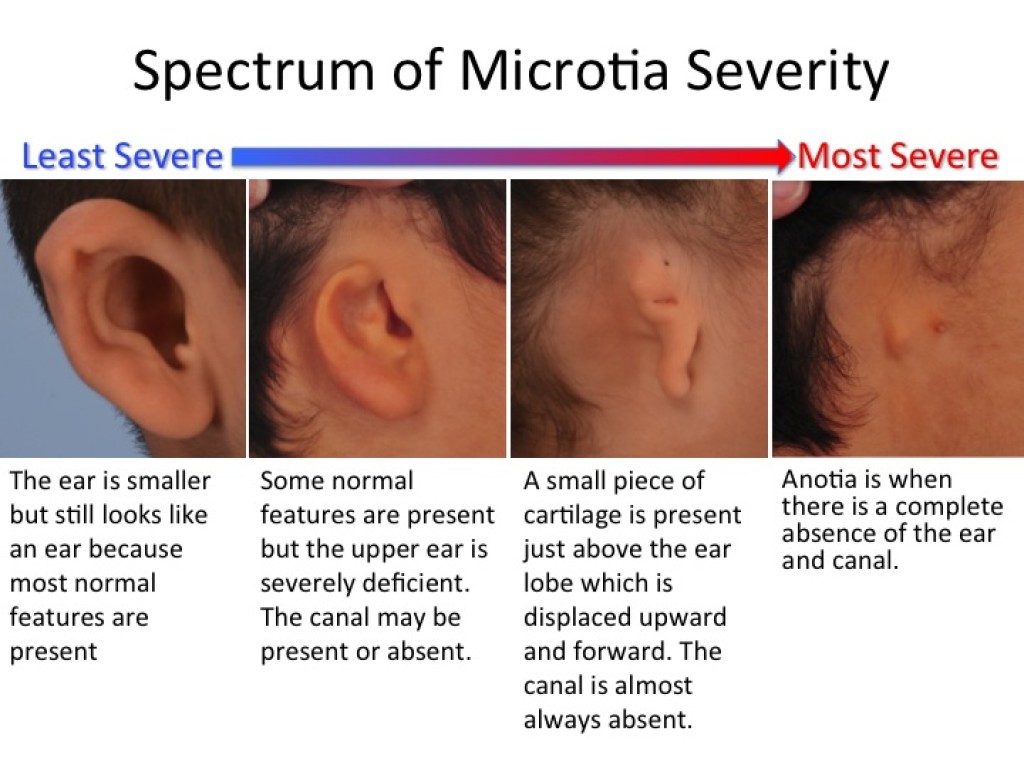Microtia and atresia 101


The Microtia/Atresia Program at Texas Children's Hospital has been caring for children since 2008. We are a multidisciplinary care team that includes board-certified pediatric ear, nose and throat (ENT) surgeons, a board-certified facial plastic surgeon and an audiologist (hearing specialist) to help create a comprehensive treatment plan. We offer treatment options and a unique plan for each patient including bone-anchored hearing aids, middle ear implant and microtia and atresia surgical repair.
The term "microtia" is intuitive. In Latin, micro means “small”, and otia means “ear.” Microtia is a birth deformity of the ear that occurs in about one in every 10,000 live births. Microtia can occur with other congenital abnormalities, but is most often seen as an isolated, independent deformity and is often associated with a small or absent ear canal. Those who are most commonly affected include Asians, Hispanics and Caucasians. Males and females are affected at approximately the same rates.
Microtia is classified into four different types:

Atresia is absence or underdevelopment of the ear canal and middle ear structures. Microtia is almost always accompanied by atresia because the outer ear and the middle ear develop around the same time during fetal development. Some microtia patients have what appears at first look to be a normal canal, but many of them end in a blind pouch (i.e. no connection into middle ear).
Some patients have small ear canals but their middle ear may be normal, and as a result their hearing can be normal or they may have an underdeveloped middle ear resulting in significant conductive hearing loss. Sensorineural function is usually normal as the cochlea and neural elements of hearing are unaffected.
The exact cause of microtia is unknown. Parents who have a child with microtia have an increased risk of 1 in 20 for subsequent children. The risk of a child with microtia eventually having a child of his/her own with microtia is also 1 in 20.
Awareness of facial difference between children starts around 5 years old and an ear deformity may attract innocent curiosity at this age from peers. More commonly it is a desire to fit in that manifests around 10-12 years of age in most children with microtia and leads to a request for reconstruction.
Microtia reconstruction is a multi-staging surgery ranging from 2-4 stages depending on the degree of the microtia.
There are several methods available for ear reconstruction for children with microtia. At Texas Children’s Hospital, we primarily prefer the use of the patient’s own rib cartilage (autologous) as our main method of reconstruction. It will be as resistant to the knocks and trauma of life as a normal ear and heal normally if injured. Depending upon the type of procedure, a new ear can be created in two or four stages. Typically the procedures are spread over a three to six month time frame, so the total duration from beginning to end is about one year.
The atresia repair (reconstruction of the ear canal, tympanic membrane and ossicular chain) is usually delayed until the external ear reconstruction is near-complete or complete. Candidacy is determined primarily based on CT imaging findings, and also the parents' wishes. If reconstruction of the external canal is not an option surgically, bone-anchored devices can be offered to restore normal hearing in the affected ear, as cochlear function is typically normal.
To learn more, click here.